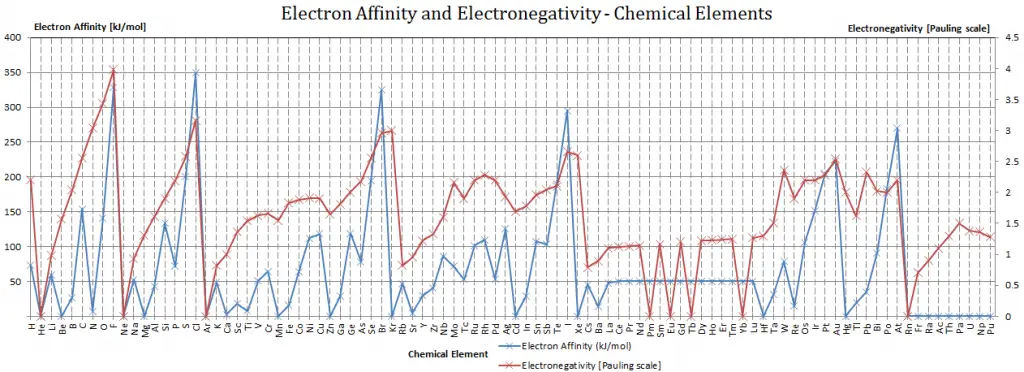
Every solid, liquid, gas, and plasma is composed of neutral or ionized atoms. The chemical properties of the atom are determined by the number of protons, in fact, by the number and arrangement of electrons. The configuration of these electrons follows the principles of quantum mechanics. The number of electrons in each element’s electron shells, particularly the outermost valence shell, is the primary factor determining its chemical bonding behavior. In the periodic table, the elements are listed in order of increasing atomic number Z.
The total number of protons in the nucleus of an atom is called the atomic number (or the proton number) of the atom and is given the symbol Z. The number of electrons in an electrically-neutral atom is the same as the number of protons in the nucleus. Therefore, the total electrical charge of the nucleus is +Ze, where e (elementary charge) equals 1,602 x 10 -19 coulombs. Each electron is influenced by the electric fields produced by the positive nuclear charge and the other (Z – 1) negative electrons in the atom.
The Pauli exclusion principle requires the electrons in an atom to occupy different energy levels instead of them all condensing in the ground state. The ordering of the electrons in the ground state of multielectron atoms starts with the lowest energy state (ground state). It moves progressively up the energy scale until each atom’s electrons have been assigned a unique set of quantum numbers. This fact has key implications for building up the periodic table of elements.
In chemistry and atomic physics, the electron affinity of an atom or molecule is defined as:
the change in energy (in kJ/mole) of a neutral atom or molecule (in the gaseous phase) when an electron is added to the atom to form a negative ion.
X + e – → X – + energy Affinity = – ∆H
In other words, it can be expressed as the neutral atom’s likelihood of gaining an electron. Note that ionization energies measure the tendency of a neutral atom to resist the loss of electrons. Electron affinities are more difficult to measure than ionization energies.
A fluorine atom in the gas phase, for example, gives off energy when it gains an electron to form a fluoride ion.
F + e – → F – – ∆H = Affinity = 328 kJ/mol
It is essential to keep track of signs to use electron affinities properly. When an electron is added to a neutral atom, energy is released. This affinity is known as the first electron affinity, and these energies are negative. By convention, the negative sign shows a release of energy. However, more energy is required to add an electron to a negative ion which overwhelms any release of energy from the electron attachment process. This affinity is known as the second electron affinity, and these energies are positive.
Electronegativity, symbol χ, is a chemical property that describes the tendency of an atom to attract electrons towards this atom. For this purpose, a dimensionless quantity, the Pauling scale, symbol χ, is the most commonly used.
The electronegativity of fluorine is:
An atom’s electronegativity is generally affected by its atomic number and the distance at which its valence electrons reside from the charged nucleus. The higher the associated electronegativity number, the more an element or compound attracts electrons toward it.
The most electronegative atom, fluorine, is assigned a value of 4.0, and values range down to cesium and francium, which are the least electronegative at 0.7.

Ionization energy, also called ionization potential, is the energy necessary to remove an electron from the neutral atom.
X + energy → X + + e −
where X is any atom or molecule capable of ionizing, X + is that atom or molecule with an electron removed (positive ion), and e − is the removed electron.
A nitrogen atom, for example, requires the following ionization energy to remove the outermost electron.
N + IE → N + + e − IE = 14.5 eV
The ionization energy associated with removing the first electron is most commonly used. The nth ionization energy refers to the amount of energy required to remove an electron from the species with a charge of (n-1).
1st ionization energy
2nd ionization energy
3rd ionization energy
There is ionization energy for each successive electron removed. The electrons that circle the nucleus move in fairly well-defined orbits. Some of these electrons are more tightly bound in the atom than others. For example, only 7.38 eV is required to remove the outermost electron from a lead atom, while 88,000 eV is required to remove the innermost electron. Helps to understand the reactivity of elements (especially metals, which lose electrons).
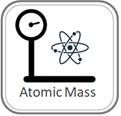
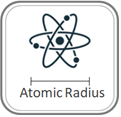
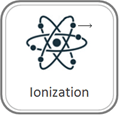

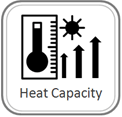
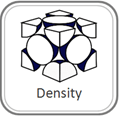
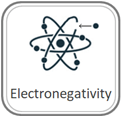
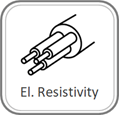

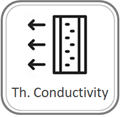
Hydrogen is a chemical element with atomic number 1, which means there are 1 proton and 1 electron in the atomic structure. The chemical symbol for Hydrogen is H.
With a standard atomic weight of circa 1.008, hydrogen is the lightest element on the periodic table. Its monatomic form (H) is the most abundant chemical substance in the Universe, constituting roughly 75% of all baryonic mass.
Discoverer: Ramsey, Sir William & Cleve, Per Teodor Element Category: Noble gasHelium is a chemical element with atomic number 2, which means there are 2 protons and 2 electrons in the atomic structure. The chemical symbol for helium is He.
It is a colorless, odorless, tasteless, non-toxic, inert, monatomic gas, the first in the noble gas group in the periodic table. Its boiling point is the lowest among all the elements.
Discoverer: Arfvedson, Johan August Element Category: Alkali metalLithium is a chemical element with atomic number 3, which means there are 3 protons and 3 electrons in the atomic structure. The chemical symbol for Lithium is Li.
It is a soft, silvery-white alkali metal. Under standard conditions, it is the lightest metal and the lightest solid element. Like all alkali metals, lithium is highly reactive and flammable and is stored in mineral oil.
Alkaline earth metal
Discoverer: Vauquelin, Nicholas Louis Element Category: Alkaline earth metalBeryllium is a chemical element with atomic number 4, which means there are 4 protons and 4 electrons in the atomic structure. The chemical symbol for Beryllium is Be.
Beryllium is a hard, grayish metal naturally found in mineral rocks, coal, soil, and volcanic dust. The commercial use of beryllium requires the use of appropriate dust control equipment and industrial controls at all times because of the toxicity of inhaled beryllium-containing dust that can cause a chronic, life-threatening allergic disease in some people called berylliosis.
Discoverer: Davy, Sir Humphry & Thénard, Louis-Jaques & Gay-Lussac, Louis-Joseph Element Category: MetalloidsBoron is a chemical element with atomic number 5, which means there are 5 protons and 5 electrons in the atomic structure. The chemical symbol for Boron is B.
Significant concentrations of boron occur on the Earth in compounds known as the borate minerals. There are over 100 different borate minerals, but the most common are: borax, kernite, ulexite, etc. Natural boron consists primarily of two stable isotopes, 11B (80.1%) and 10B (19.9%). In the nuclear industry, boron is commonly used as a neutron absorber due to the high neutron cross-section of isotope 10B.
Discoverer: unknown Element Category: NonmetalsCarbon is a chemical element with atomic number 6, which means there are 6 protons and 6 electrons in the atomic structure. The chemical symbol for Carbon is C.
It is nonmetallic and tetravalent-making four electrons available to form covalent chemical bonds. Carbon is one of the few elements known since antiquity. Carbon is the 15th most abundant element in the Earth’s crust and the fourth most abundant element in the Universe by mass after hydrogen, helium, and oxygen.
Discoverer: Rutherford, Daniel Element Category: NonmetalsNitrogen is a chemical element with atomic number 7, which means there are 7 protons and 7 electrons in the atomic structure. The chemical symbol for Nitrogen is N.
Nitrogen is a colorless, odorless unreactive gas that forms about 78% of the Earth’s atmosphere. Liquid nitrogen (made by distilling liquid air) boils at 77.4 kelvins (−195.8°C) and is used as a coolant.
Discoverer: Priestley, Joseph & Scheele, Carl Wilhelm Element Category: NonmetalsOxygen is a chemical element with atomic number 8, which means there are 8 protons and 8 electrons in the atomic structure. The chemical symbol for Oxygen is O.
Oxygen is a colorless, odorless reactive gas, the chemical element of atomic number 8, and the life-supporting component of the air. It is a member of the chalcogen group on the periodic table, a highly reactive nonmetal, and an oxidizing agent that readily forms oxides with most elements and other compounds. By mass, oxygen is the third-most abundant element in the Universe, after hydrogen and helium.
Discoverer: Moissan, Henri Element Category: NonmetalsFluorine is a chemical element with the atomic number 9, which means there are 9 protons and 9 electrons in the atomic structure. The chemical symbol for Fluorine is F.
Fluorine is the lightest halogen and exists as a highly toxic pale yellow diatomic gas at standard conditions. As the most electronegative element, it is extremely reactive: almost all other elements, including some noble gases, form compounds with fluorine.
Discoverer: Ramsay, William & Travers, Morris Element Category: Noble gasNeon is a chemical element with the atomic number 10, which means there are 10 protons and 10 electrons in the atomic structure. The chemical symbol for Neon is Ne.
Neon is a colorless, odorless, inert monatomic gas under standard conditions, with about two-thirds the density of air.
20.1797 amu Discoverer: Davy, Sir Humphry Element Category: Alkali metalSodium is a chemical element with the atomic number 11, which means there are 11 protons and 11 electrons in the atomic structure. The chemical symbol for Sodium is Na.
Sodium is a soft, silvery-white, highly reactive metal. Sodium is an alkali metal in group 1 of the periodic table. It has a single electron in its outer shell that it readily donates, creating a positively charged atom—the Na+ cation.
Alkaline earth metal
Discoverer: Black, Joseph Element Category: Alkaline earth metalMagnesium is a chemical element with the atomic number 12, which means 12 protons and 12 electrons are in the atomic structure. The chemical symbol for Magnesium is Mg.
Magnesium is a shiny gray solid which bears a close physical resemblance to the other five elements in the second column (group 2, or alkaline earth metals) of the periodic table: all group 2 elements have the same electron configuration in the outer electron shell and a similar crystal structure.
Discoverer: Oersted, Hans Christian Element Category: Post-transition metalsAluminum is a chemical element with the atomic number 13, which means there are 13 protons and 13 electrons in the atomic structure. The chemical symbol for Aluminum is Al.
Aluminium is a silvery-white, soft, nonmagnetic, ductile metal in the boron group. By mass, aluminium makes up about 8% of the Earth’s crust; it is the third most abundant element after oxygen and silicon and the most abundant metal in the crust, though it is less common in the mantle below.
Discoverer: Berzelius, Jöns Jacob Element Category: MetalloidsSilicon is a chemical element with the atomic number 14, which means there are 14 protons and 14 electrons in the atomic structure. The chemical symbol for Silicon is Si.
Silicon is a hard and brittle crystalline solid with a blue-grey metallic luster, and it is a tetravalent metalloid and semiconductor.
Discoverer: Brandt, Hennig Element Category: NonmetalPhosphorus is a chemical element with the atomic number 15, which means there are 15 protons and 15 electrons in the atomic structure. The chemical symbol for Phosphorus is P.
As an element, phosphorus exists in two major forms—white phosphorus and red phosphorus—but because it is highly reactive, phosphorus is never found as a free element on Earth. At 0.099%, phosphorus is the most abundant pnictogen in the Earth’s crust.
Discoverer: unknown Element Category: NonmetalSulfur is a chemical element with the atomic number 16, which means there are 16 protons and 16 electrons in the atomic structure. The chemical symbol for Sulfur is S.
Sulfur is abundant, multivalent, and nonmetallic. Under normal conditions, sulfur atoms form cyclic octatomic molecules with a chemical formula S8. Elemental sulfur is a bright yellow crystalline solid at room temperature. Chemically, sulfur reacts with all elements except gold, platinum, iridium, tellurium, and noble gases.
Discoverer: Scheele, Carl Wilhelm Element Category: NonmetalChlorine is a chemical element with the atomic number 17, which means there are 17 protons and 17 electrons in the atomic structure. The chemical symbol for Chlorine is Cl.
Chlorine is a yellow-green gas at room temperature. It is an extremely reactive element and a strong oxidizing agent: among the elements, it has the highest electron affinity and the third-highest electronegativity, behind only oxygen and fluorine.
Discoverer: Ramsay, Sir William & Strutt, John (Lord Rayleigh) Element Category: Noble gasArgon is a chemical element with the atomic number 18, which means there are 18 protons and 18 electrons in the atomic structure. The chemical symbol for Argon is Ar.
Argon is the third-most abundant gas in the Earth’s atmosphere, at 0.934% (9340 ppmv). It is more than twice as abundant as water vapor (which averages about 4000 ppmv but varies greatly), 23 times as abundant as carbon dioxide (400 ppmv), and more than 500 times as abundant as neon (18 ppmv). Argon is mostly used as an inert shielding gas in welding and other high-temperature industrial processes where ordinarily unreactive substances become reactive; for example, an argon atmosphere is used in graphite electric furnaces to prevent the graphite from burning.
Discoverer: Davy, Sir Humphry Element Category: Alkali metalPotassium is a chemical element with the atomic number 19, which means there are 19 protons and 19 electrons in the atomic structure. The chemical symbol for Potassium is K.
Potassium was first isolated from potash, the ashes of plants, from which its name derives. In the periodic table, potassium is one of the alkali metals. All the alkali metals have a single valence electron in the outer electron shell, which is easily removed to create an ion with a positive charge – a cation, which combines with anions to form salts. Naturally occurring potassium is composed of three isotopes, of which 40K is radioactive.
39.0983 amuAlkaline earth metal
Discoverer: Davy, Sir Humphry Element Category: Alkaline earth metalCalcium is a chemical element with the atomic number 20, which means there are 20 protons and 20 electrons in the atomic structure. The chemical symbol for Calcium is Ca.
Calcium is an alkaline earth metal, and it is a reactive pale yellow metal that forms a dark oxide-nitride layer when exposed to air. Its physical and chemical properties are most similar to its heavier homologs, strontium, and barium. It is the fifth most abundant element in Earth’s crust and the third most abundant metal, after iron and aluminium.
Discoverer: Nilson, Lars Fredrik Element Category: Transition metalsScandium is a chemical element with the atomic number 21, which means there are 21 protons and 21 electrons in the atomic structure. The chemical symbol for Scandium is Sc.
Scandium is a silvery-white metallic d-block element, and it has historically been sometimes classified as a rare-earth element, together with yttrium and the lanthanides.
Discoverer: Gregor, William Element Category: Transition metalsTitanium is a chemical element with the atomic number 22, which means there are 22 protons and 22 electrons in the atomic structure. The chemical symbol for Titanium is Ti. Titanium is a lustrous transition metal with a silver color, low density, and high strength. Titanium is resistant to corrosion in seawater, aqua regia, and chlorine. Titanium can be used in surface condensers. These condensers use tubes usually made of stainless steel, copper alloys, or titanium, depending on several selection criteria (such as thermal conductivity or corrosion resistance). Titanium condenser tubes are usually the best technical choice. However, titanium is a very expensive material.
Discoverer: Del Rio, Andrés Manuel (1801) & Sefström, Nils Gabriel (1830) Element Category: Transition metalsVanadium is a chemical element with the atomic number 23, which means there are 23 protons and 23 electrons in the atomic structure. The chemical symbol for Vanadium is V.
Vanadium is a hard, silvery grey, ductile, and malleable transition metal. The elemental metal is rarely found in nature, but once isolated artificially, the formation of an oxide layer (passivation) stabilizes the free metal somewhat against further oxidation.
50.9415 amu Discoverer: Vauquelin Element Category: Transition metalsChromium is a chemical element with the atomic number 24, which means there are 24 protons and 24 electrons in the atomic structure. The chemical symbol for chromium is Cr.
Chromium is a steely-grey, lustrous, hard, and brittle metal[4] that takes a high polish, resists tarnishing, and has a high melting point. A major development was the discovery that steel could be made highly resistant to corrosion and discoloration by adding metallic chromium to form stainless steel.
Discoverer: Gahn, Johan Gottlieb Element Category: Transition metalsManganese is a chemical element with the atomic number 25, which means there are 25 protons and 25 electrons in the atomic structure. The chemical symbol for Manganese is Mn.
Manganese is a metal with important industrial metal alloy uses, particularly stainless steel.
Discoverer: unknown Element Category: Transition metalsIron is a chemical element with the atomic number 26, which means 26 protons and 26 electrons are in the atomic structure. The chemical symbol for Iron is Fe.
Iron is a metal in the first transition series. It is by mass the most common element on Earth, forming much of Earth’s outer and inner core. It is the fourth most common element in the Earth’s crust. Its abundance in rocky planets like Earth is due to its abundant production by fusion in high-mass stars.
Discoverer: Brandt, Georg Element Category: Transition metalsCobalt is a chemical element with the atomic number 27, which means there are 27 protons and 27 electrons in the atomic structure. The chemical symbol for Cobalt is Co.
Cobalt is found in the Earth’s crust only in chemically combined form, save for small deposits found in alloys of natural meteoric iron. The free element, produced by reductive smelting, is a hard, lustrous, silver-gray metal.
Discoverer: Cronstedt, Alex Fredrik Element Category: Transition metalsNickel is a chemical element with atomic number 28, which means there are 28 protons and 28 electrons in the atomic structure. The chemical symbol for Nickel is Ni.
Nickel is a silvery-white lustrous metal with a slight golden tinge. Nickel belongs to the transition metals and is hard and ductile.
Discoverer: unknown Element Category: Transition metalsCopper is a chemical element with atomic number 29, which means 29 protons and 29 electrons in the atomic structure. The chemical symbol for Copper is Cu.
Copper is a soft, malleable, ductile metal with very high thermal and electrical conductivity. A freshly exposed surface of pure copper has a reddish-orange color. Copper is used as a conductor of heat and electricity as a building material. As a constituent of various metal alloys, such as sterling silver used in jewelry, cupronickel is used to make marine hardware and coins.
Discoverer: unknown Element Category: Transition metalsZinc is a chemical element with the atomic number 30, which means there are 30 protons and 30 electrons in the atomic structure. The chemical symbol for Zinc is Zn.
In some respects, zinc is chemically similar to magnesium: both elements exhibit only one normal oxidation state (+2), and the Zn2+ and Mg2+ ions are of similar size.
Discoverer: Lecoq de Boisbaudran, Paul-Émile Element Category: Post-transition metalsGallium is a chemical element with atomic number 31, which means there are 31 protons and 31 electrons in the atomic structure. The chemical symbol for Gallium is Ga.
Gallium has similarities to the other metals of the group, aluminium, indium, and thallium. Gallium does not occur as a free element in nature but as gallium(III) compounds in trace amounts in zinc ores and bauxite.
Discoverer: Winkler, Clemens A. Element Category: MetalloidsGermanium is a chemical element with the atomic number 32, which means there are 32 protons and 32 electrons in the atomic structure. The chemical symbol for Germanium is Ge.
Germanium is a lustrous, hard, grayish-white metalloid in the carbon group, chemically similar to its group neighbors, tin and silicon. Pure germanium is a semiconductor with an appearance similar to elemental silicon.
Discoverer: unknown Element Category: MetalloidsArsenic is a chemical element with the atomic number 33, which means there are 33 protons and 33 electrons in the atomic structure. The chemical symbol for Arsenic is As.
Arsenic occurs in many minerals, usually in combination with sulfur and metals, and as a pure elemental crystal. Arsenic is a metalloid.
Discoverer: Berzelius, Jöns Jacob Element Category: NonmetalSelenium is a chemical element with atomic number 34, which means there are 34 protons and 34 electrons in the atomic structure. The chemical symbol for Selenium is Se.
Selenium is a nonmetal with intermediate properties between the elements above and below in the periodic table, sulfur and tellurium, and has similarities to arsenic. It rarely occurs in its elemental state or as pure ore compounds in the Earth’s crust.
Discoverer: Balard, Antoine-Jérôme Element Category: NonmetalBromine is a chemical element with the atomic number 35, which means there are 35 protons and 35 electrons in the atomic structure. The chemical symbol for Bromine is Br.
Bromine is the third-lightest halogen and is a fuming red-brown liquid at room temperature that evaporates readily to form a similarly colored gas. Its properties are thus intermediate between those of chlorine and Iodine.
Discoverer: Ramsay, Sir William & Travers, Morris Element Category: Noble gasKrypton is a chemical element with atomic number 36, which means there are 36 protons and 36 electrons in the atomic structure. The chemical symbol for Krypton is Kr.
Krypton is a member of group 18 (noble gases) elements. A colorless, odorless, tasteless noble gas, krypton occurs in trace amounts in the atmosphere and is often used with other rare gases in fluorescent lamps.
Discoverer: Bunsen, Robert Wilhelm & Kirchhoff, Gustav Robert Element Category: Alkali metalsRubidium is a chemical element with atomic number 37, which means there are 37 protons and 37 electrons in the atomic structure. The chemical symbol for Rubidium is Rb.
Rubidium is a soft, silvery-white metallic element of the alkali metal group, with an atomic mass of 85.4678. Elemental rubidium is highly reactive, with properties similar to those of other alkali metals, including rapid oxidation in air.
Alkaline earth metals
Discoverer: Crawford, Adair Element Category: Alkaline earth metalsStrontium is a chemical element with atomic number 38, which means there are 38 protons and 38 electrons in the atomic structure. The chemical symbol for Strontium is Sr.
Strontium is an alkaline earth metal. Strontium is a soft silver-white yellowish metallic element that is highly reactive chemically.
Discoverer: Gadolin, Johan Element Category: Transition metalsYttrium is a chemical element with atomic number 39, which means there are 39 protons and 39 electrons in the atomic structure. The chemical symbol for Yttrium is Y.
Yttrium is a silvery-metallic transition metal chemically similar to the lanthanides and has often been classified as a “rare-earth element.”
Discoverer: Klaproth, Martin Heinrich Element Category: Transition metalsZirconium is a chemical element with the atomic number 40, which means there are 40 protons and 40 electrons in the atomic structure. The chemical symbol for Zirconium is Zr. Zirconium is a lustrous, grey-white, strong transition metal that resembles hafnium and titanium to a lesser extent. Zirconium is mainly used as a refractory and opacifier, although small amounts are used as an alloying agent for strong corrosion resistance. Zirconium is widely used as a cladding for nuclear reactor fuels.
Discoverer: Hatchet, Charles Element Category: Transition metalsNiobium is a chemical element with atomic number 41, which means there are 41 protons and 41 electrons in the atomic structure. The chemical symbol for Niobium is Nb.
Niobium is a soft, grey, ductile transition metal, often found in the minerals pyrochlore (the main commercial source for niobium) and columbite.
Discoverer: Scheele, Carl Welhelm Element Category: Transition metalsMolybdenum is a chemical element with atomic number 42, which means there are 42 protons and 42 electrons in the atomic structure. The chemical symbol for Molybdenum is Mo.
Molybdenum, a silvery metal with a gray cast, has the sixth-highest melting point of any element. It readily forms hard, stable carbides in alloys, and for this reason, most of the world’s production of the element (about 80%) is used in steel alloys, including high-strength alloys and superalloys.
Discoverer: Perrier, Carlo & Segrè, Emilio Element Category: Transition metalsTechnetium is a chemical element with the atomic number 43, which means there are 43 protons and 43 electrons in the atomic structure. The chemical symbol for Technetium is Tc.
Technetium is the lightest element whose isotopes are all radioactive; none are stable. Nearly all technetium is produced synthetically, and only minute amounts are found in the Earth’s crust. The chemical properties of this silvery gray, crystalline transition metal are intermediate between rhenium and manganese.
Discoverer: Klaus, Karl Karlovich Element Category: Transition metalsRuthenium is a chemical element with the atomic number 44, which means there are 44 protons and 44 electrons in the atomic structure. The chemical symbol for Ruthenium is Ru.
Ruthenium is a rare transition metal belonging to the platinum group of the periodic table. Like the other metals of the platinum group, ruthenium is inert to most other chemicals.
Discoverer: Wollaston, William Hyde Element Category: Transition metalsRhodium is a chemical element with the atomic number 45, which means there are 45 protons and 45 electrons in the atomic structure. The chemical symbol for Rhodium is Rh.
Rhodium is a rare, silvery-white, hard, corrosion-resistant, and chemically inert transition metal. It is a noble metal and a member of the platinum group.
Discoverer: Wollaston, William Hyde Element Category: Transition metalsPalladium is a chemical element with atomic number 46, which means 46 protons and 46 electrons are in the atomic structure. The chemical symbol for Palladium is Pd.
Palladium, platinum, rhodium, ruthenium, iridium, and osmium form a group of elements called platinum group metals (PGMs). These have similar chemical properties, but palladium has the lowest melting point and is the least dense of them.
Discoverer: unknown Element Category: Transition metalsSilver is a chemical element with atomic number 47, which means 47 protons and 47 electrons are in the atomic structure. The chemical symbol for silver is Ag.
Silver is a soft, white, lustrous transition metal, and it exhibits the highest electrical conductivity, thermal conductivity, and reflectivity of any metal. The metal is found in the Earth’s crust in the pure, free elemental form (“native silver”), as an alloy with gold and other metals, and in minerals such as argentite and chlorargyrite.
Discoverer: Stromeyer, Prof. Friedrich Element Category: Transition metalsCadmium is a chemical element with the atomic number 48, which means there are 48 protons and 48 electrons in the atomic structure. The chemical symbol for Cadmium is Cd.
Cadmium is a soft, bluish-white metal chemically similar to the two other stable metals in group 12, zinc and mercury. In the nuclear industry, cadmium is commonly used as a thermal neutron absorber due to its very high neutron absorption cross-section of 113Cd, and 113Cd has a specific absorption cross-section.
Discoverer: Reich, Ferdinand & Richter, Hieronymus Element Category: Post-transition metalsIndium is a chemical element with an atomic number 49, which means 49 protons and 49 electrons are in the atomic structure. The chemical symbol for Indium is In.
Indium is a post-transition metal that makes up 0.21 parts per million of the Earth’s crust. Very soft and malleable, indium has a melting point higher than sodium and gallium but lower than lithium and tin. Chemically, indium is similar to gallium and thallium.
Discoverer: unknown Element Category: Post-transition metalsTin is a chemical element with the atomic number 50, which means there are 50 protons and 50 electrons in the atomic structure. The chemical symbol for Tin is Sn.
Tin is a post-transition metal in group 14 of the periodic table, and it is obtained chiefly from the mineral cassiterite, which contains tin dioxide. The first alloy used on a large scale was bronze, made of tin and copper, from early as 3000 BC.
Discoverer: unknown Element Category: MetalloidsAntimony is a chemical element with atomic number 51, which means there are 51 protons and 51 electrons in the atomic structure. The chemical symbol for Antimony is Sb.
Antimony is a lustrous gray metalloid, and it is found in nature mainly as the sulfide mineral stibnite. Antimony compounds have been known since ancient times and were powdered for use as medicine and cosmetics, often known by the Arabic name, kohl.
Discoverer: Müller von Reichenstein, Franz Joseph Element Category: MetalloidsTellurium is a chemical element with the atomic number 52, which means there are 52 protons and 52 electrons in the atomic structure. The chemical symbol for Tellurium is Te.
Tellurium is a brittle, mildly toxic, rare, silver-white metalloid. Tellurium is chemically related to selenium and sulfur, and it is occasionally found in its native form as elemental crystals. Tellurium is far more common in the Universe as a whole than on Earth, and its extreme rarity in the Earth’s crust is comparable to platinum.
Discoverer: Courtois, Bernard Element Category: NonmetalIodine is a chemical element with the atomic number 53, which means there are 53 protons and 53 electrons in the atomic structure. The chemical symbol for Iodine is I.
Iodine is the heaviest of the stable halogens, and it exists as a lustrous, purple-black metallic solid at standard conditions that sublime readily to form a violet gas. Iodine is the least abundant of the stable halogens, the sixty-first most abundant element, and it is even less abundant than the so-called rare-earth. It is the heaviest essential mineral nutrient.
Discoverer: Ramsay, William & Travers, Morris William Element Category: Noble gasXenon is a chemical element with the atomic number 54, which means there are 54 protons and 54 electrons in the atomic structure. The chemical symbol for Xenon is Xe.
Xenon is a colorless, dense, odorless noble gas found in the Earth’s atmosphere in trace amounts. The name xenon for this gas comes from the Greek word ξένον [xenon], the neuter singular form of ξένος [xenos], meaning ‘foreign(er),’ ‘strange(r),’ or ‘guest.’ In the nuclear industry, especially artificial xenon 135 has a tremendous impact on the operation of a nuclear reactor.
Discoverer: Kirchhoff, Gustav & Bunsen, Robert Element Category: Alkali metalCesium is a chemical element with the atomic number 55, which means there are 55 protons and 55 electrons in the atomic structure. The chemical symbol for Caesium is Cs.
Cesium is a soft, silvery-gold alkali metal with a melting point of 28.5 °C, making it one of only five elemental metals liquid at or near room temperature. Cesium has physical and chemical properties similar to those of rubidium and potassium.
Alkaline earth metals
Discoverer: Davy, Sir Humphry Element Category: Alkaline earth metalsBarium is a chemical element with atomic number 56, which means there are 56 protons and 56 electrons in the atomic structure. The chemical symbol for Barium is Ba.
Barium is the fifth element in group 2 and is a soft, silvery alkaline earth metal. Because of its high chemical reactivity, barium is never found in nature as a free element. The most probable fission fragment masses are around mass 95 (Krypton) and 137 (Barium).
Lanthanoids Discoverer: — Element Category:Lanthanoids comprise the 15 metallic chemical elements with atomic numbers 57 through 71, from lanthanum through the lutetium. These elements, along with the chemically similar elements scandium and yttrium, are often collectively known as the rare earth elements.
Discoverer: Coster, Dirk & De Hevesy, George Charles Element Category: Transition metalsHafnium is a chemical element with the atomic number 72, which means there are 72 protons and 72 electrons in the atomic structure. The chemical symbol for Hafnium is Hf. Hafnium is a lustrous, silvery gray, tetravalent transition metal. Hafnium chemically resembles zirconium and is found in many zirconium minerals. Hafnium’s large neutron capture cross-section makes it a good material for neutron absorption in control rods in nuclear power plants, but at the same time requires that it be removed from the neutron-transparent corrosion-resistant zirconium alloys used in nuclear reactors.
Discoverer: Ekeberg, Anders Gustav Element Category: Transition metalsTantalum is a chemical element with atomic number 73, which means there are 73 protons and 73 electrons in the atomic structure. The chemical symbol for Tantalum is Ta.
Tantalum is a rare, hard, blue-gray, lustrous transition metal that is highly corrosion-resistant.
Discoverer: Elhuyar, Juan José & Elhuyar, Fausto Element Category: Transition metalsTungsten is a chemical element with atomic number 74, which means there are 74 protons and 74 electrons in the atomic structure. The chemical symbol for Tungsten is W.
Tungsten is a rare metal found naturally on Earth, almost exclusively in chemical compounds. Tungsten is an intrinsically brittle and hard material, making it difficult to work.
Discoverer: Noddack, Walter & Berg, Otto Carl & Tacke, Ida Element Category: Transition metalsRhenium is a chemical element with the atomic number 75, which means there are 75 protons and 75 electrons in the atomic structure. The chemical symbol for Rhenium is Re.
Rhenium is a silvery-white, heavy, third-row transition metal in group 7 of the periodic table.
Discoverer: Tennant, Smithson Element Category: Transition metalsOsmium is a chemical element with atomic number 76, which means 76 protons and 76 electrons are in the atomic structure. The chemical symbol for Osmium is Os. Osmium is a hard, brittle, bluish-white transition metal in the platinum group that is found as a trace element in alloys, mostly in platinum ores. Osmium is the densest naturally occurring element, with a density of 22.59 g/cm3. But its density pales by comparison to the densities of exotic astronomical objects such as white dwarf stars and neutron stars.
Discoverer: Tennant, Smithson Element Category: Transition metalsIridium is a chemical element with the atomic number 77, which means there are 77 protons and 77 electrons in the atomic structure. The chemical symbol for Iridium is Ir.
Iridium is a very hard, brittle, silvery-white transition metal of the platinum group. Iridium is generally credited with being the second densest element (after osmium). It is also the most corrosion-resistant metal, even at temperatures as high as 2000 °C.
Discoverer: Ulloa, Antonio de Element Category: Transition metalsPlatinum is a chemical element with atomic number 78, which means there are 78 protons and 78 electrons in the atomic structure. The chemical symbol for Platinum is Pt. Platinum is a dense, malleable, ductile, highly unreactive, precious, silverish-white transition metal. Platinum is one of the least reactive metals, and it has remarkable corrosion resistance, even at high temperatures, and is therefore considered a noble metal. Platinum is used in catalytic converters, laboratory equipment, electrical contacts and electrodes, platinum resistance thermometers, dentistry equipment, and jewelry.
Discoverer: unknown Element Category: Transition metalsGold is a chemical element with atomic number 79, which means 79 protons and 79 electrons are in the atomic structure. The chemical symbol for Gold is Au.
Gold is a bright, slightly reddish yellow, dense, soft, malleable, and ductile metal. Gold is a transition metal and a group 11 element, and it is one of the least reactive chemical elements and is solid under standard conditions. Gold is thought to have been produced in supernova nucleosynthesis from the collision of neutron stars.
Discoverer: unknown Element Category: Transition metalsMercury is a chemical element with the atomic number 80, which means 80 protons and 80 electrons are in the atomic structure. The chemical symbol for Mercury is Hg.
Mercury is commonly known as quicksilver and was formerly named hydrargyrum. Mercury is a heavy, silvery d-block element. Mercury is the only metallic element liquid at standard conditions for temperature and pressure.
Discoverer: Crookes, William Element Category: Post-transition metalsThallium is a chemical element with atomic number 81, which means there are 81 protons and 81 electrons in the atomic structure. The chemical symbol for Thallium is Tl.
Thallium is a soft gray post-transition metal that is not found free in nature. Commercially, thallium is produced as a byproduct of refining heavy metal sulfide ores. Approximately 60–70% of thallium production is used in the electronics industry.
Discoverer: unknown Element Category: Post-transition metalsLead is a chemical element with atomic number 82, which means 82 protons and 82 electrons are in the atomic structure. The chemical symbol for lead is Pb.
Lead is a heavy metal that is denser than most common materials, and lead is soft and malleable and has a relatively low melting point. Lead is widely used as a gamma shield. The major advantage of a lead shield is its compactness due to its higher density. Lead has the highest atomic number of any stable element and concludes three major decay chains of heavier elements.
Discoverer: Geoffroy, Claude Element Category: Post-transition metalsBismuth is a chemical element with atomic number 83, which means there are 83 protons and 83 electrons in the atomic structure. The chemical symbol for Bismuth is Bi.
When freshly produced, bismuth is a brittle metal with a silvery-white color, but surface oxidation can give it a pink tinge. Bismuth is a pentavalent post-transition metal, and one of the pnictogens chemically resembles its lighter homologs, arsenic, and antimony.
Discoverer: Curie, Marie & Pierre Element Category: Post-transition metalsPolonium is a chemical element with atomic number 84, which means there are 84 protons and 84 electrons in the atomic structure. The chemical symbol for Polonium is Po.
Polonium is a rare and highly radioactive metal with no stable isotopes. Polonium is chemically similar to selenium and tellurium, though its metallic character resembles its horizontal neighbors in the periodic table: thallium, lead, and bismuth.
Discoverer: Corson, Dale R. & Mackenzie, K. R. Element Category: MetalloidsAstatine is a chemical element with the atomic number 85, which means there are 85 protons and 85 electrons in the atomic structure. The chemical symbol for Astatine is At.
Astatine is the rarest naturally occurring element on the Earth’s crust, and it occurs on Earth as the decay product of various heavier elements. The bulk properties of astatine are not known with any certainty.
Discoverer: Dorn, Friedrich Ernst Element Category: Noble gasRadon is a chemical element with atomic number 86, which means there are 86 protons and 86 electrons in the atomic structure. The chemical symbol for radon is Rn.
Radon is a radioactive, colorless, odorless, tasteless noble gas. Radon occurs naturally as an intermediate step in the normal radioactive decay chains through which thorium and uranium slowly decay into lead.
Discoverer: Perey, Marguerite Element Category: Alkali metalFrancium is a chemical element with atomic number 87, which means there are 87 protons and 87 electrons in the atomic structure. The chemical symbol for Francium is Fr.
Francium is an alkali metal that has one valence electron. Francium is the second-least electronegative element, behind only cesium, and is the second rarest naturally occurring element (after astatine). Francium is a highly radioactive metal that decays into astatine, radium, and radon.
Alkaline earth metal
Discoverer: Curie, Marie & Pierre Element Category: Alkaline earth metalRadium is a chemical element with the atomic number 88, which means there are 88 protons and 88 electrons in the atomic structure. The chemical symbol for Radium is Ra.
Pure radium is silvery-white alkaline earth metal. All isotopes of radium are highly radioactive, with the most stable isotope being radium-226.
Discoverer: — Element Category:The actinide or actinoid series encompasses the 15 metallic chemical elements with atomic numbers from 89 to 103, actinium through lawrencium.
Discoverer: Scientists at Dubna, Russia (1964)/Albert Ghiorso et al. (1969) Element Category: Transition metalRutherfordium is a chemical element with atomic number 104, which means there are 104 protons and 104 electrons in the atomic structure. The chemical symbol for Rutherfordium is Rf.
Discoverer: Scientists at Dubna, Russia (1967)/Lawrence Berkeley Laboratory (1970) Element Category: Transition metalDubnium is a chemical element with atomic number 105, which means there are 105 protons and 105 electrons in the atomic structure. The chemical symbol for Dubnium is Db.
Discoverer: Albert Ghiorso et. al. Element Category: Transition metalSeaborgium is a chemical element with an atomic number 106, which means 106 protons and 106 electrons are in the atomic structure. The chemical symbol for Seaborgium is Sg.
Discoverer: Scientists at Dubna, Russia Element Category: Transition metalBohrium is a chemical element with atomic number 107, which means 107 protons and 107 electrons are in the atomic structure. The chemical symbol for Bohrium is Bh.
Discoverer: Armbruster, Paula & Muenzenberg, Dr. Gottfried Element Category: Transition metalHassium is a chemical element with an atomic number 108, which means 108 protons and 108 electrons are in the atomic structure. The chemical symbol for Hassium is Hs. It is a synthetic element (first synthesized at Hasse in Germany) and radioactive. The most stable known isotope, 269 Hs, has a half-life of approximately 9.7 seconds. It has an estimated density of 40.7 x 10 3 kg/m 3 . The density of Hassium results from its high atomic weight and the significant decrease in ionic radii of the elements in the lanthanide series, known as lanthanide and actinide contraction.
Discoverer: Armbruster, Paula & Muenzenberg, Dr. Gottfried Element Category: unknown, probably a transition metalMeitnerium is a chemical element with atomic number 109, which means there are 109 protons and 109 electrons in the atomic structure. The chemical symbol for Meitnerium is Mt.
Discoverer: Armbruster, Paula & Muenzenberg, Dr. Gottfried Element Category: unknown, probably a transition metalDarmstadtium is a chemical element with atomic number 110, which means there are 110 protons and 110 electrons in the atomic structure. The chemical symbol for Darmstadtium is Ds.
Discoverer: David Anderson, Ruhani Rabin, Team Updraft Element Category: unknown, probably a transition metalRoentgenium is a chemical element with atomic number 111, which means there are 111 protons and 111 electrons in the atomic structure. The chemical symbol for Roentgenium is Rg.
Discoverer: Armbruster, Paula & Muenzenberg, Dr. Gottfried Element Category: unknown, probably a transition metalCopernicium is a chemical element with atomic number 112, which means there are 112 protons and 112 electrons in the atomic structure. The chemical symbol for Copernicium is Cn.
Discoverer: Y. T. Oganessian et. al. Element Category: unknown, probably a transition metalNihonium is a chemical element with atomic number 113, which means there are 113 protons and 113 electrons in the atomic structure. The chemical symbol for Nihonium is Nh.
Discoverer: Scientists at Dubna, Russia Element Category: unknown, probably a post-transition metalFlerovium is a chemical element with atomic number 114, which means there are 114 protons and 114 electrons in the atomic structure. The chemical symbol for Flerovium is Fl.
Discoverer: Y. T. Oganessian et. al. Element Category: unknownMoscovium is a chemical element with atomic number 115, which means there are 115 protons and 115 electrons in the atomic structure. The chemical symbol for Moscovium is Mc.
Discoverer: Scientists at Dubna, Russia Element Category: unknownLivermorium is a chemical element with atomic number 116, which means there are 116 protons and 116 electrons in the atomic structure. The chemical symbol for Livermorium is Lv.
Discoverer: — Element Category: unknownTennessine is a chemical element with atomic number 117, which means there are 117 protons and 117 electrons in the atomic structure. The chemical symbol for Tennessine is Ts.
Discoverer: Y. T. Oganessian et. al. Element Category: unknownOganesson is a chemical element with atomic number 118, which means there are 118 protons and 118 electrons in the atomic structure. The chemical symbol for Oganesson is Og.
Discoverer: Mosander, Carl Gustav Element Category: LanthanoidsLanthanum is a chemical element with atomic number 57, which means there are 57 protons and 57 electrons in the atomic structure. The chemical symbol for Lanthanum is La.
Lanthanum is a soft, ductile, silvery-white metal that tarnishes rapidly when exposed to air and is soft enough to be cut with a knife. It is the eponym of the lanthanide series, a group of 15 similar elements between lanthanum and lutetium in the periodic table, of which lanthanum is the first and the prototype. It is also sometimes considered the first element of the 6th-period transition metals and is traditionally counted among the rare earth elements.
Discoverer: Hisinger, Wilhelm & Berzelius, Jöns Jacob/Klaproth, Martin Heinrich Element Category: LanthanoidsCerium is a chemical element with atomic number 58, which means there are 58 protons and 58 electrons in the atomic structure. The chemical symbol for Cerium is Ce.
Cerium is a soft, ductile, and silvery-white metal that tarnishes when exposed to air, and it is soft enough to be cut with a knife. Cerium is the second element in the lanthanide series, and cerium is also traditionally considered one of the rare-earth elements.
Discoverer: Von Welsbach, Baron Auer Element Category: LanthanoidsPraseodymium is a chemical element with atomic number 59, which means there are 59 protons and 59 electrons in the atomic structure. The chemical symbol for Praseodymium is Pr.
Praseodymium is a soft, silvery, malleable, and ductile metal valued for its magnetic, electrical, chemical, and optical properties. Praseodymium is the third member of the lanthanide series and is traditionally considered one of the rare-earth metals.
Discoverer: Von Welsbach, Baron Auer Element Category: LanthanoidsNeodymium is a chemical element with the atomic number 60, which means there are 60 protons and 60 electrons in the atomic structure. The chemical symbol for neodymium is Nd.
Neodymium is a soft silvery metal that tarnishes in the air. Neodymium is not found naturally in metallic form or unmixed with other lanthanides, and it is usually refined for general use. Although neodymium is classed as rare Earth, it is a fairly common element.
Discoverer: Marinsky, Jacob A. & Coryell, Charles D. & Glendenin, Lawerence. E. Element Category: LanthanoidsPromethium is a chemical element with atomic number 61, which means there are 61 protons and 61 electrons in the atomic structure. The chemical symbol for Promethium is Pm.
Promethium is one of only two such elements followed in the periodic table by elements with stable forms. All of its isotopes are radioactive. In nuclear reactors, promethium equilibrium exists in power operation. This equilibrium is also known as the “samarium 149 reservoir” since all of this promethium must undergo decay to samarium.
Discoverer: Lecoq de Boisbaudran, Paul-Émile Element Category: LanthanoidsSamarium is a chemical element with an atomic number 62, which means 62 protons and 62 electrons are in the atomic structure. The chemical symbol for Samarium is Sm. Samarium is a typical member of the lanthanide series, and it is a moderately hard silvery metal that readily oxidizes in air. The name samarium is after the mineral samarskite from which it was isolated. Although classified as a rare earth element, samarium is the 40th most abundant element in the Earth’s crust and is more common than such metals like tin. In the nuclear industry, especially natural and artificial samarium 149 has an important impact on the operation of a nuclear reactor.
Discoverer: Demarçay, Eugène-Antole Element Category: LanthanoidsEuropium is a chemical element with atomic number 63, which means 63 protons and 63 electrons are in the atomic structure. The chemical symbol for Europium is Eu.
Europium is a moderately hard, silvery metal that readily oxidizes in air and water. Europium usually assumes the oxidation state +3, being a typical member of the lanthanide series. Europium is one of the least abundant elements in the Universe, and only about 5×10−8% of all matter in the Universe is europium.
Discoverer: De Marignac, Charles Galissard Element Category: LanthanoidsGadolinium is a chemical element with atomic number 64, which means there are 64 protons and 64 electrons in the atomic structure. The chemical symbol for Gadolinium is Gd.
Gadolinium belongs to rare earth elements (it is one of seventeen chemical elements in the periodic table). In the nuclear industry, gadolinium is commonly used as a neutron absorber due to the very high neutron absorption cross-section of two isotopes, 155Gd and 157Gd. Their absorption cross-sections are the highest among all stable isotopes.
Discoverer: Mosander, Carl Gustav Element Category: LanthanoidsTerbium is a chemical element with the atomic number 65, which means 65 protons and 65 electrons are in the atomic structure. The chemical symbol for Terbium is Tb.
Terbium is a silvery-white, rare earth metal that is malleable, ductile, and soft enough to be cut with a knife. The ninth member of the lanthanide series, terbium, is a fairly electropositive metal that reacts with water, evolving hydrogen gas.
Discoverer: Lecoq de Boisbaudran, Paul-Émile Element Category: LanthanoidsDysprosium is a chemical element with the atomic number 66, which means there are 66 protons and 66 electrons in the atomic structure. The chemical symbol for Dysprosium is Dy.
It is a rare earth element with a metallic silver luster. Dysprosium is used for its high thermal neutron absorption cross-section in making control rods in nuclear reactors for its high magnetic susceptibility in data storage applications.
Discoverer: Cleve, Per Theodor Element Category: LanthanoidsHolmium is a chemical element with atomic number 67, which means there are 67 protons and 67 electrons in the atomic structure. The chemical symbol for Holmium is Ho.
Holmium is a part of the lanthanide series. Holmium is a rare-earth element and Holmium is a relatively soft and malleable silvery-white metal.
Discoverer: Mosander, Carl Gustav Element Category: LanthanoidsErbium is a chemical element with the atomic number 68, which means there are 68 protons and 68 electrons in the atomic structure. The chemical symbol for Erbium is Er.
Erbium is a silvery-white solid metal. When artificially isolated, natural erbium is always found in chemical combination with other elements. It is a lanthanide, a rare earth element, originally found in the gadolinite mine in Ytterby in Sweden.
Discoverer: Cleve, Per Teodor Element Category: LanthanoidsThulium is a chemical element with the atomic number 69, which means there are 69 protons and 69 electrons in the atomic structure. The chemical symbol for Thulium is Tm.
Thulium is an easily workable metal with a bright silvery-gray luster. It is fairly soft and slowly tarnishes in the air. Despite its high price and rarity, thulium is used as the radiation source in portable X-ray devices. Thulium is the thirteenth and third-last element in the lanthanide series.
Discoverer: De Marignac, Jean Charles Galissard Element Category: LanthanoidsYtterbium is a chemical element with the atomic number 70, which means there are 70 protons and 70 electrons in the atomic structure. The chemical symbol for Ytterbium is Yb.
Because of its closed-shell electron configuration, its density, melting, and boiling points differ significantly from most other lanthanides.
Discoverer: Urbain, Georges Element Category: LanthanoidsLutetium is a chemical element with atomic number 71, which means there are 71 protons and 71 electrons in the atomic structure. The chemical symbol for Lutetium is Lu.
Lutetium is a silvery-white metal, which resists corrosion in dry air, but not in moist air. Lutetium is the last element in the lanthanide series, and it is traditionally counted among rare-earth.
Discoverer: Debierne, André Element Category: ActinoidsActinium is a chemical element with atomic number 89, which means there are 89 protons and 89 electrons in the atomic structure. The chemical symbol for Actinium is Ac.
Actinium is a soft, silvery-white radioactive metal. Actinium gave the name to the actinide series, a group of 15 similar elements between actinium and lawrencium in the periodic table.
Discoverer: Berzelius, Jöns Jacob Element Category: ActinoidsThorium is a chemical element with the atomic number 90, which means 90 protons and 90 electrons are in the atomic structure. The chemical symbol for Thorium is Th.
Thorium metal is silvery and tarnishes black when exposed to air, forming dioxide. Thorium is moderately hard, malleable, and has a high melting point. Thorium is a naturally-occurring element, and it is estimated to be about three times more abundant than uranium. Thorium is commonly found in monazite sands (rare earth metals containing phosphate minerals).
Discoverer: Göhring, Otto & Fajans, Kasimir Element Category: ActinoidsProtactinium is a chemical element with the atomic number 91, which means 91 protons and 91 electrons are in the atomic structure. The chemical symbol for Protactinium is Pa.
Protactinium is a dense, silvery-gray metal that readily reacts with oxygen, water vapor, and inorganic acids.
Discoverer: Klaproth, Martin Heinrich Element Category: ActinoidsUranium is a chemical element with atomic number 92, which means 92 protons and 92 electrons are in the atomic structure. The chemical symbol for uranium is U.
Uranium is a silvery-white metal in the actinide series of the periodic table. Uranium is weakly radioactive because all isotopes of uranium are unstable, with half-lives varying between 159,200 years and 4.5 billion years. Uranium has the highest atomic weight of the primordially occurring elements, and its density is about 70% higher than that of lead and slightly lower than gold or tungsten.
Discoverer: McMillan, Edwin M. & Abelson, Philip H. Element Category: ActinoidsNeptunium is a chemical element with an atomic number 93, which means 93 protons and 93 electrons are in the atomic structure. The chemical symbol for Neptunium is Np.
Neptunium metal is silvery and tarnishes when exposed to air. Neptunium is the first transuranic element.
Discoverer: Glenn T. Seaborg, Joseph W. Kennedy, Edward M. McMillan, Arthur C. Wohl Element Category: ActinoidsPlutonium is a chemical element with atomic number 94, which means there are 94 protons and 94 electrons in the atomic structure. The chemical symbol for Plutonium is Pu.
Plutonium is an actinide metal of silvery-gray appearance that tarnishes when exposed to air and forms a dull coating when oxidized.
Discoverer: Glenn T. Seaborg, Ralph A. James, Leon O. Morgan, Albert Ghiorso Element Category: ActinoidsAmericium is a chemical element with the atomic number 95, which means there are 95 protons and 95 electrons in the atomic structure. The chemical symbol for Americium is Am.
Americium is a transuranic member of the actinide series in the periodic table located under the lanthanide element europium, and thus by analogy, was named after the Americas.
Discoverer: Glenn T. Seaborg, Ralph A. James, Albert Ghiorso Element Category: ActinoidsCurium is a chemical element with the atomic number 96, which means there are 96 protons and 96 electrons in the atomic structure. The chemical symbol for Curium is Cm.
Curium is a hard, dense, silvery metal with a relatively high melting point and boiling point for an actinide.
Discoverer: Stanley G. Thompson, Glenn T. Seaborg, Kenneth Street, Jr., Albert Ghiorso Element Category: ActinoidsBerkelium is a chemical element with the atomic number 97, which means there are 97 protons and 97 electrons in the atomic structure. The chemical symbol for Berkelium is Bk.
Berkelium is a member of the actinide and transuranium element series.
Discoverer: Stanley G. Thompson, Glenn T. Seaborg, Kenneth Street, Jr., Albert Ghiorso Element Category: ActinoidsCalifornium is a chemical element with the atomic number 98, which means 98 protons and 98 electrons are in the atomic structure. The chemical symbol for Californium is Cf.
Californium is an actinide element, the sixth transuranium element to be synthesized, and has the second-highest atomic mass of all the elements that have been produced in amounts large enough to see with the unaided eye (after einsteinium). The most commonly used spontaneous fission neutron source is the radioactive isotope californium-252.
Discoverer: Albert Ghiorso et. al. Element Category: ActinoidsEinsteinium is a chemical element with the atomic number 99, which means 99 protons and 99 electrons are in the atomic structure. The chemical symbol for Einsteinium is Es.
Einsteinium is the seventh transuranic element and an actinide.
Discoverer: Albert Ghiorso et. al. Element Category: ActinoidsFermium is a chemical element with the atomic number 100, which means there are 100 protons and 100 electrons in the atomic structure. The chemical symbol for Fermium is Fm.
Fermium is a member of the actinide series. It is the heaviest element formed by neutron bombardment of lighter elements and hence the last element that can be prepared in macroscopic quantities.
Discoverer: Stanley G. Thompson, Glenn T. Seaborg, Bernard G. Harvey, Gregory R. Choppin, Albert Ghiorso
Element Category: ActinoidsMendelevium is a chemical element with atomic number 101, which means 101 protons and 101 electrons are in the atomic structure. The chemical symbol for Mendelevium is Md.
Mendelevium is a metallic radioactive transuranic element in the actinide series, and it is the first element that currently cannot be produced in macroscopic quantities.
Discoverer: Albert Ghiorso, Glenn T. Seaborg, Torbørn Sikkeland, John R. Walton Element Category: ActinoidsNobelium is a chemical element with atomic number 102, which means 102 protons and 102 electrons are in the atomic structure. The chemical symbol for Nobelium is No.
Nobelium is the tenth transuranic element and is the penultimate member of the actinide series. Like all elements with an atomic number over 100, nobelium can only be produced in particle accelerators by bombarding lighter elements with charged particles.
Discoverer: Albert Ghiorso, Torbjørn Sikkeland, Almon E. Larsh, Robert M. Latimer Element Category: ActinoidsLawrencium is a chemical element with an atomic number 103, which means 103 protons and 103 electrons are in the atomic structure. The chemical symbol for Lawrencium is Lr.
Lawrencium is the final member of the actinide series. Like all elements with an atomic number over 100, lawrencium can only be produced in particle accelerators by bombarding lighter elements with charged particles.
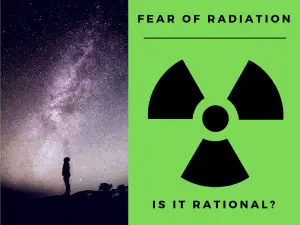
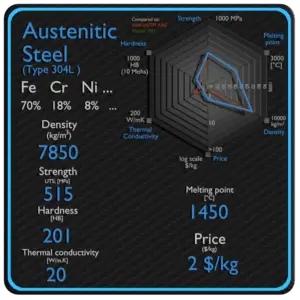

Our Website follows all legal requirements to protect your privacy. Visit our Privacy Policy page.
The Cookies Statement is part of our Privacy Policy.
The information contained on this website is for general information purposes only. This website does not use any proprietary data. Visit our Editorial note.
1) You may use almost everything for non-commercial and educational use.
2) You may not distribute or commercially exploit the content, especially on another website.
If you want to get in touch with us, please do not hesitate to contact us via e-mail: [email protected]